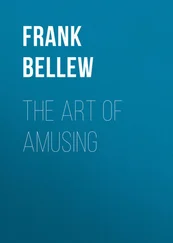Frank Abagnale - The Art of the Steal
Здесь есть возможность читать онлайн «Frank Abagnale - The Art of the Steal» весь текст электронной книги совершенно бесплатно (целиком полную версию без сокращений). В некоторых случаях можно слушать аудио, скачать через торрент в формате fb2 и присутствует краткое содержание. Год выпуска: 2001, ISBN: 2001, Издательство: Broadway Books, Жанр: Старинная литература, на английском языке. Описание произведения, (предисловие) а так же отзывы посетителей доступны на портале библиотеки ЛибКат.
- Название:The Art of the Steal
- Автор:
- Издательство:Broadway Books
- Жанр:
- Год:2001
- ISBN:9780767910910
- Рейтинг книги:4 / 5. Голосов: 1
-
Избранное:Добавить в избранное
- Отзывы:
-
Ваша оценка:
- 80
- 1
- 2
- 3
- 4
- 5
The Art of the Steal: краткое содержание, описание и аннотация
Предлагаем к чтению аннотацию, описание, краткое содержание или предисловие (зависит от того, что написал сам автор книги «The Art of the Steal»). Если вы не нашли необходимую информацию о книге — напишите в комментариях, мы постараемся отыскать её.
The Art of the Steal — читать онлайн бесплатно полную книгу (весь текст) целиком
Ниже представлен текст книги, разбитый по страницам. Система сохранения места последней прочитанной страницы, позволяет с удобством читать онлайн бесплатно книгу «The Art of the Steal», без необходимости каждый раз заново искать на чём Вы остановились. Поставьте закладку, и сможете в любой момент перейти на страницу, на которой закончили чтение.
Интервал:
Закладка:
Unfortunately, it’s almost impossible to get a fraudulent entry removed from your credit report. Even if you prove something is wrong, they don’t delete it. They put an asterisk next to it, and a note at the bottom that says the customer disputes this entry. How helpful.
In 2000, the government approved a bill that allows consumers and businesses to sign contracts online and know that their e-signature is just as binding as one in ink. This gives electronic signatures the legal weight of paper signatures, and makes a contract binding immediately. The law took effect on October 1, 2000, and already we have completely electronic mortgages available. I’m against the whole idea. I fear this will lead to still more identity theft. It’s too easy to steal or duplicate a e-signature. Who is going to have the signature? Who is going to store it? How will they protect it?
Under the law, a digital signature could take any of a number of forms—a string of numeric code that is encrypted or thumbprints or irises read by special devices. Because of identity theft, many Florida banks currently require non-customers to leave a thumbprint when cashing a check, and some large banks in the Orlando area are taking thumbprints from all new customers. California, Texas, and Georgia are among states that require drivers to give a thumbprint or fingerprint when they come in to get or renew a license. But if you give your thumbprint to an organization and they put it in a database, and someone breaks into that database, as they will, and steals that thumbprint, are you going to go out and get another thumbprint?
Additionally, there are ways to get around fingerprints. Impostors will coat their fingers with airplane glue, which, when it dries, covers the skin’s ridges and makes for useless fingerprints. Or they’ll spray their fingers with clear lacquer or hair spray, which congeal in the grooves and spaces of your prints.
Maybe a system that scans your iris sounds impenetrable. But what if someone knocks you unconscious and then holds your eye in front of the scanner? What if someone points a gun at you and forces you to sit in front of the iris device?
The idea of giving thumbprints or copies of your iris raises the hackles of many people, myself included, because of the privacy issues involved. We could end up with a national identity system that tracks and monitors people, and that gets me to wondering if the cure is worse than the disease. The Internet has already irrevocably altered the nature of privacy and turned us into a culture of transparency. Why make it worse?
You have to decide at what point is your personal security coming at the expense of your privacy. E-signatures mean that you’re giving out more of your identity. You have to ask why? Why do you have to surrender something else just for convenience? Why can’t you wait to overnight something? Why does everything have to be instant? Instant breakfast. Instant camera. Instant mortgage. You can’t wait a day? It has to happen in ten seconds?
WHAT THE GOVERNMENT CAN DO
If we’re serious about combating identity theft, it’s going to take a federal solution, beginning with changes in the way the Social Security number is used and the free and easy access businesses have to people’s credit reports. At the moment, the Social Security number has been ruined. When I was growing up, no one knew your Social Security number. Now it’s everywhere, and so it’s worthless for identification purposes. But it’s still being used that way.
There are steps everyone can take to safeguard their own number. Whenever someone asks for your Social Security number, you ought to make sure you know who you’re dealing with and that they absolutely need the number. If a business requests it to confirm your identity, ask if there’s an alternative number that can be used.
But these steps aren’t enough. The government needs to pass a law that will clamp down on the use of the Society Security number as a uniform identifier. A measure that would do just that has been introduced in Congress and defeated several times. It won’t help me or anyone my age or older, but it will ensure that the number will be more secure for my kids and grandchildren.
We also have to force credit-granting agencies to require more identification and buttress their credit card policies. We need to restrict the selling of personal information by credit bureaus, state and federal agencies, and marketing firms. The federal government has to take this issue up—and soon. If it doesn’t do something, so many people are going to be running around claiming to be the same person that we won’t know who anyone is.
WHERE THERE’S A WILL
In a world of wolves and sheep, I look on myself as a sheep dog. I try to make people think about things. Fraud, as it continues to grow, will really test our society. It will challenge us to decide, what is enough? We’ve come to tolerate fake luggage and an occasional fraudulent purchase assigned to our credit card, but now, with our very selves being stolen, it’s getting to crunch time.
Twenty years from now, there will be entire categories of frauds that the best science fiction writer couldn’t even imagine, just as decades ago no one would have imagined Internet fraud because no one imagined the Internet. As more and more gets done electronically, I think you’re going to see an explosion in crimes where there’s no human face you can identify. There won’t be any line-ups; who are you going to line up—e-mail addresses?
There is an undeniable appeal of scams. I understand that better than anymore. When you discover the way they work, it’s like being taken backstage at a magic show. But scams aren’t entertainment. They gnaw at the fabric of society and ruin lives. We have to look at white-collar crime as being every bit as dangerous as armed robbery.
Every day, I hear of a new fraud. I recently learned of a famous soccer star who never uses his real signature to sign checks or business documents, because so many people know his autograph that thieves are continually forging his signature. So he signs checks by printing his initials. He’s lost his signature to crooks.
I was talking to a highway patrol officer in Tennessee who specializes in automobile fraud, and he told me there are roughly twelve million classified ads run each year in the United States for used cars. About three-quarters of them are believed to have been placed by “curbstoners.” Curbstoners are con artists who buy wrecked cars and cosmetically repair them and sell them as if they’re new, or else buy leased vehicles that are only a couple of years old, but have maybe a hundred thousand miles on them. They roll back the odometers to 29,000 miles and sell them for much more than they paid. They’re called curbstoners, because if you reply to their ad, they make a point to come to you and sell you the car at the curb outside your house or office. The curbstoners are slick. They always have a story: “I just had my first kid, so I’ve got to sell this Honda so I can get a station wagon.” It’s become an enormous problem, because the titles are forged and it’s nearly impossible to trace these crooks. And when I hear that three-quarters of the classified ads for cars are frauds, that tells me there’s no way I’d ever respond to one.
I read about con artists who scan newspapers for pleas for lost dogs. They call up the distraught owners and tell them they found their pet while they were traveling and took it home with them before learning of its true home. They offer to ship the dog to them as soon as they wire the airfare. People are so ecstatic to hear that their dog has been found, they send the money.
On and on it goes, but we don’t take it seriously. Once, as a TV demonstration, I went up to a cashier at the express lane of a Kroger’s store and used the store manager’s driver’s license to cash a check. The store manager obviously had a different name. I’m white. He was black. Why bother to ask for an ID if you’re not going to take it seriously?
Читать дальшеИнтервал:
Закладка:
Похожие книги на «The Art of the Steal»
Представляем Вашему вниманию похожие книги на «The Art of the Steal» списком для выбора. Мы отобрали схожую по названию и смыслу литературу в надежде предоставить читателям больше вариантов отыскать новые, интересные, ещё непрочитанные произведения.
Обсуждение, отзывы о книге «The Art of the Steal» и просто собственные мнения читателей. Оставьте ваши комментарии, напишите, что Вы думаете о произведении, его смысле или главных героях. Укажите что конкретно понравилось, а что нет, и почему Вы так считаете.












